The Affair of the Necklace
4.2 /10 1 Votes
2/4 Roger Ebert 42% Metacritic Genre Drama, History, Romance Writer John Sweet Language English | 6.1/10 IMDb 15% Rotten Tomatoes Duration Country United States | |||||||||||||||||||||||||||||||||
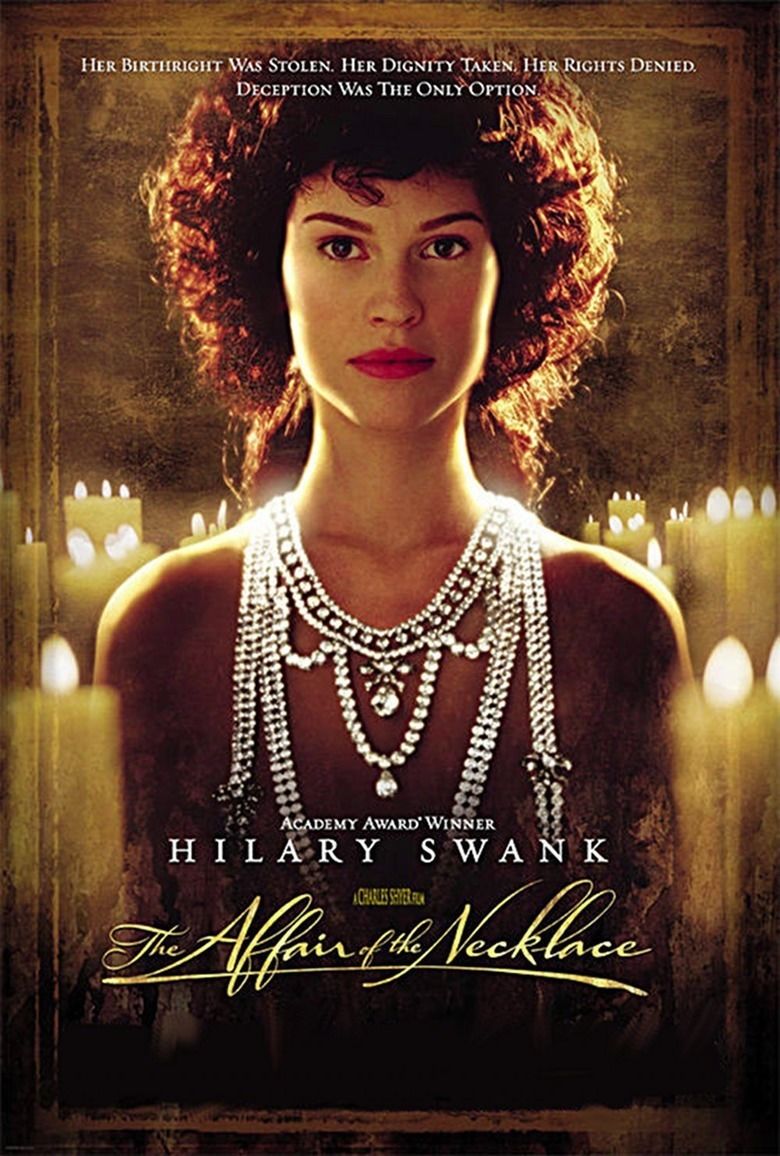 | ||||||||||||||||||||||||||||||||||
Release date November 30, 2001 (2001-11-30) Cast (Jeanne St. Remy de Valois), (Rétaux de Vilette), (Count Cagliostro), (Young Jeanne), (Cardinal Louis de Rohan), (Count Nicolas De La Motte) Similar movies Intimate Confessions of a Chinese Courtesan , Mad Max: Fury Road , John Wick , Knock Knock , Taken 3 , Blackhat | ||||||||||||||||||||||||||||||||||
The affair of the necklace trailer
The Affair of the Necklace is a 2001 American historical drama film directed by Charles Shyer. The screenplay by John Sweet is based on what became known as the Affair of the Diamond Necklace, an incident that helped fuel the French populace's disillusionment with the monarchy and, among other causes, eventually led to the French Revolution. The film received negative reviews from critics, but the sets, music and costume design were widely praised.
Contents
- The affair of the necklace trailer
- Plot
- Cast
- Critical reception
- Awards and nominations
- Differences between the film and the real affair
- References
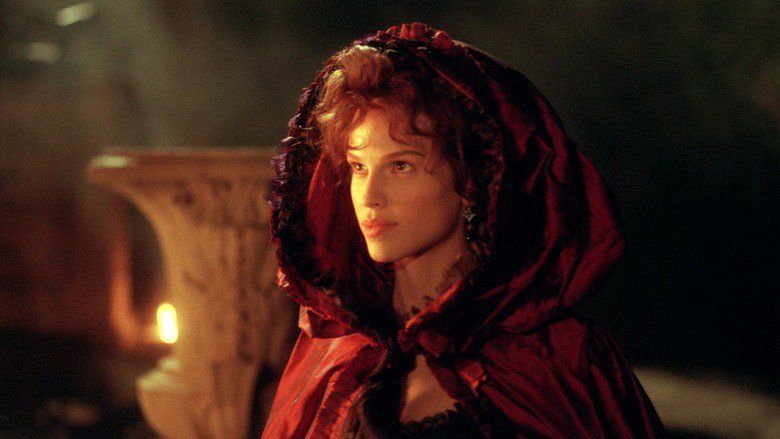
Plot
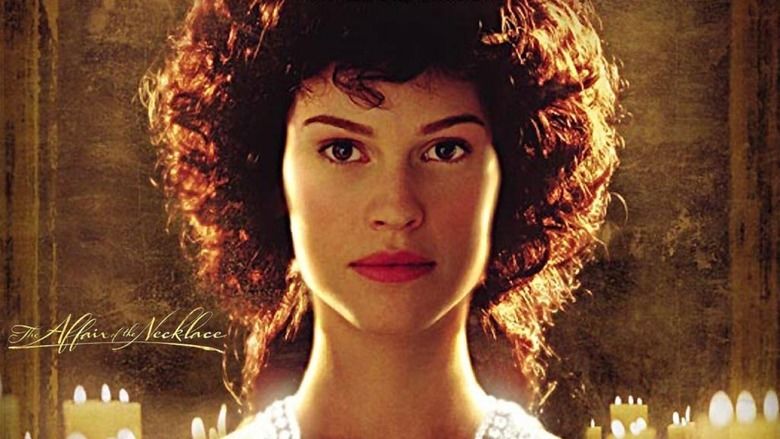
Jeanne de Saint-Rémy de Valois, orphaned at an early age, is determined to reclaim her royal title and the home taken from her family when she was a child. When she is rebuffed by Marie Antoinette and fails to achieve her goal through legal channels, she joins forces with the arrogant, well-connected gigolo Rétaux de Villette and her own wayward, womanizing husband Nicholas. They concoct a plan to earn her enough money to purchase the property.
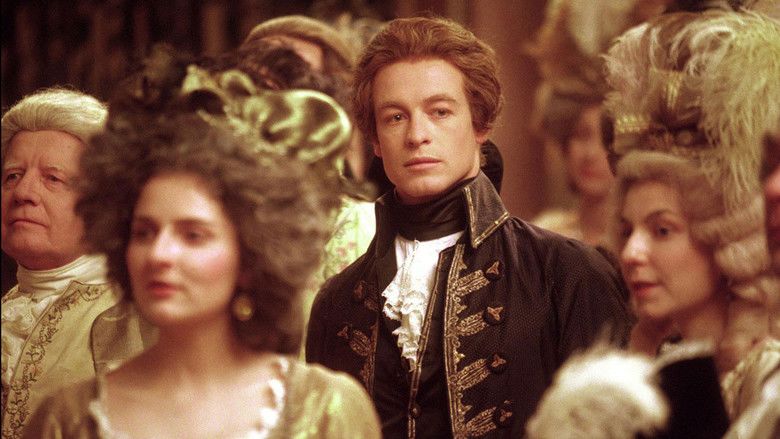
King Louis XV had commissioned Parisian jewellers Boehmer and Bassenge to create an opulent 2,800-carat (560 g), 647-diamond necklace to present to his mistress Madame du Barry, but the king died before it was completed. Hoping to recover the high cost of the necklace, its creators try to persuade Marie Antoinette to purchase it. Knowing its history, she declines.
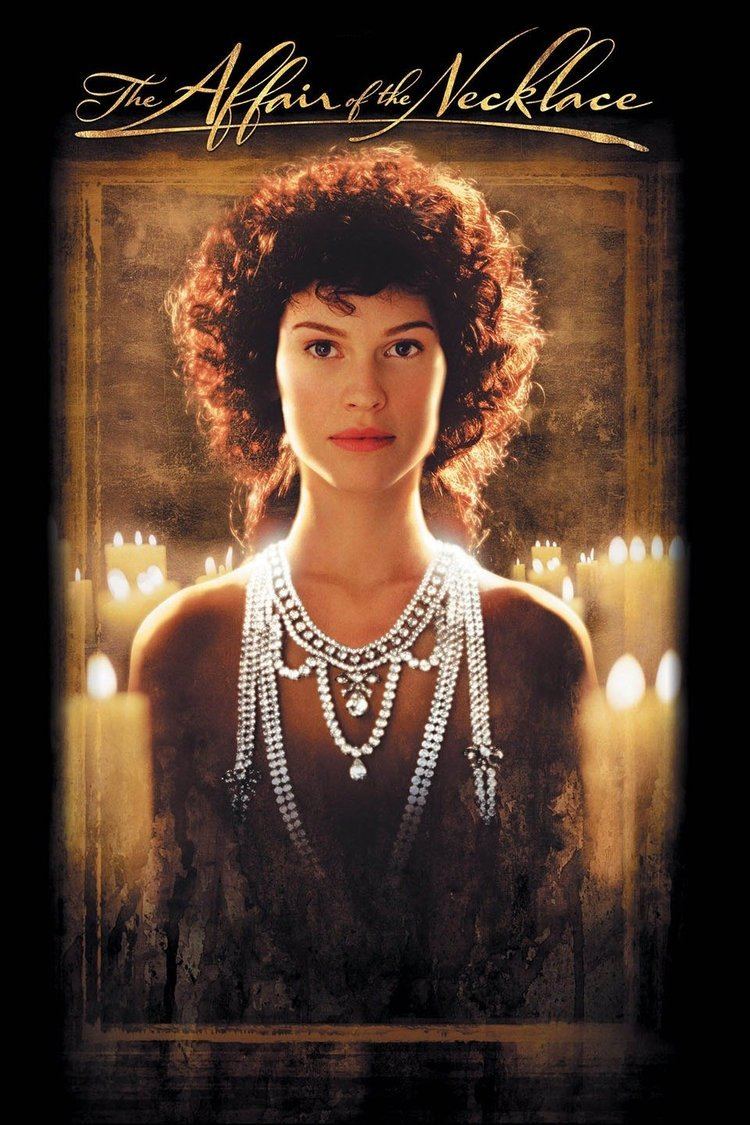
Jeanne approaches debauched libertine Cardinal Louis de Rohan and introduces herself as a confidante of the Queen. For years the Cardinal has yearned to regain the Queen's favor and acquire the position of Prime Minister of France, and when he is reassured by occultist Count Cagliostro that Jeanne is legitimate, he allows himself to be seduced by her promise to intervene on his behalf. He begins to correspond with the Queen and is unaware that his letters to her are intercepted and the Queen's responses are forgeries intended to manipulate him. The tone of the letters become very intimate. The cardinal becomes more and more convinced that Marie Antoinette is in love with him, and he becomes ardently enamored of her.
Jeanne allegedly arranges a meeting between the two in the garden at the Palace of Versailles. Portraying the Queen is Nicole Leguay d'Oliva, a prostitute bearing some resemblance to her. Heavily cloaked, with her face in the shadows, she agrees to forget their past disagreements. The Cardinal believes his indiscretions have been forgiven and he once again is in the Queen's good favor.
Jeanne advises the Cardinal the Queen has decided to purchase the necklace but, not wanting to offend the populace by openly buying such an expensive item, she wishes him to do so on her behalf, with a promise to reimburse him for the cost by the Feast of the Assumption. The Cardinal gladly agrees and presents the necklace to Rétaux de Villette, believing him to be an emissary from the Queen. Nicholas de Lamotte sells some of the diamonds, and Jeanne uses the profits to buy her family home.
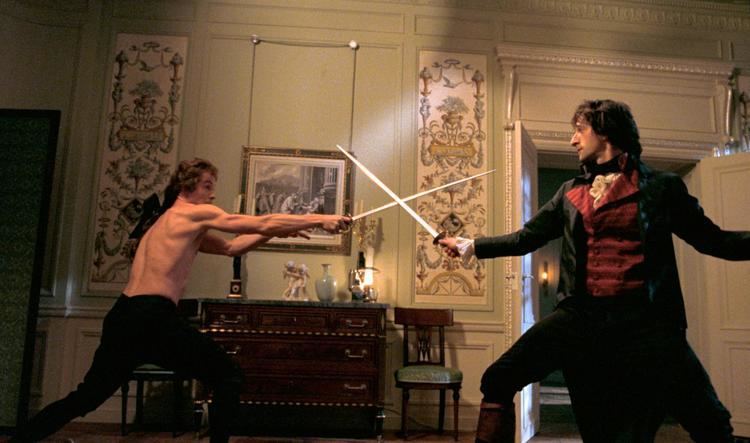
The Cardinal begins to panic when Jeanne disappears and his correspondence with the Queen comes to an abrupt end. His concern is put to rest by an invitation to visit the palace on the Feast of the Assumption, at which time he assumes he will be repaid in full and named Prime Minister. Instead, King Louis XVI, who has been made aware of his machinations by Minister Breteuil, has him imprisoned in the Bastille. Soon to follow are everyone else involved in the plot. A trial finds the Cardinal, Count Cagliostro, and Nicole Leguay d'Oliva innocent of all charges. Rétaux de Villette is found guilty and banished from France. Jeanne is found guilty and whipped and branded before being imprisoned; she later escapes to London where she publishes her memoirs and regales the locals with her tales. Eventually, Marie Antoinette, assumed to be a key player in the affair by an increasingly angry and restless populace, meets her fate on the guillotine. We learn via an epilogue Jeanne died after falling from her hotel room window and was rumored to have been killed by Royalists.
Cast

Critical reception
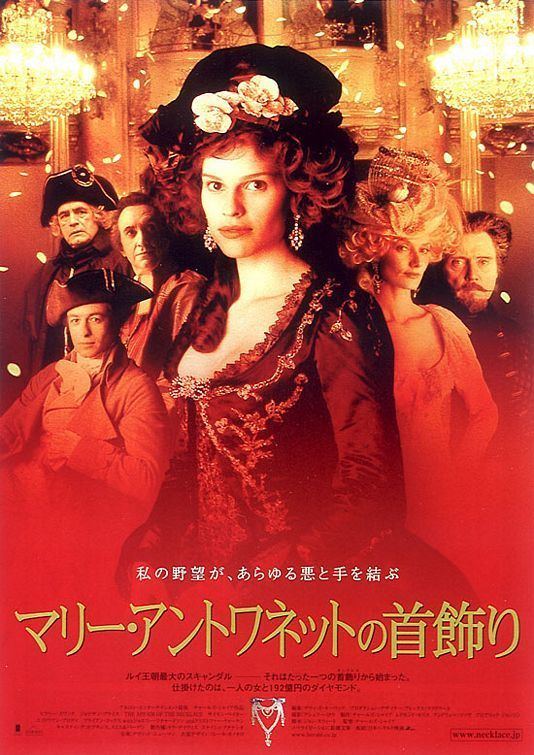
The Affair of the Necklace earned negative reviews from critics, with most of the criticism focusing on the casting of Hilary Swank as Jeanne, whom they felt didn't seem comfortable within the film's period setting and refined dialogue. The costume design and stylized period setting however were widely praised. The film currently holds a 15% rating on Rotten Tomatoes based on 61 reviews and holds a Metacritic score of 42 based on 22 reviews.
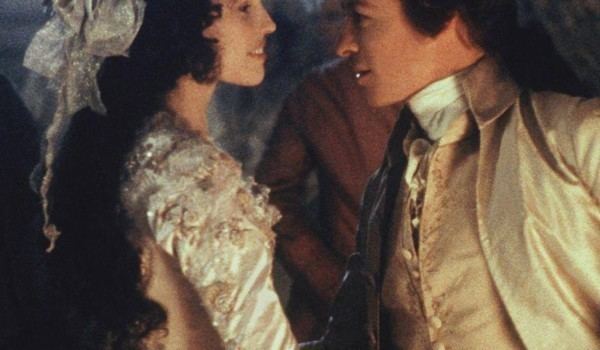
CNN Entertainment praised Hilary Swank and Charles Shyer's contributions to the film, writing, "Writer/director/producer Charles Shyer is known for such lightweight comedies as Baby Boom and Father of the Bride, but he's made a major change with this lavish period piece, shot in Prague on a modest $30 million budget. He also took somewhat of a chance with Oscar winner Hilary Swank in the leading role. Her graphic portrayal of Brandon Teena in Boys Don't Cry (1999) gave no hint as to whether or not she could pull off [an] 18th-century drama complete with feathered hats and tight corsets. She can."
Kevin Thomas of The L.A. Times wrote, "Shyer and Sweet bring consistent clarity and ever-increasing depth to the playing out of Jeanne's bold scheming and single-minded resolve; a tone of brisk wit gives way effortlessly to poignancy and ultimately tragedy."
Richard Roeper found the film to be very entertaining and was willing to overlook the script's historical liberties, stating "I'm sure that it's sort of a 'Fractured Fairy Tale' version of the real events that happened, but the fact that it was inspired by real-life events made me enjoy it all the more."
Awards and nominations
The film was nominated for the Academy Award for Best Costume Design and the Satellite Award for Best Costume Design, but lost to Moulin Rouge! in both instances.
Differences between the film and the real affair
References
The Affair of the Necklace WikipediaThe Affair of the Necklace (2001 film) IMDbThe Affair of the Necklace (2001 film) Roger EbertThe Affair of the Necklace (2001 film) Rotten TomatoesThe Affair of the Necklace (2001 film) MetacriticThe Affair of the Necklace themoviedb.org
